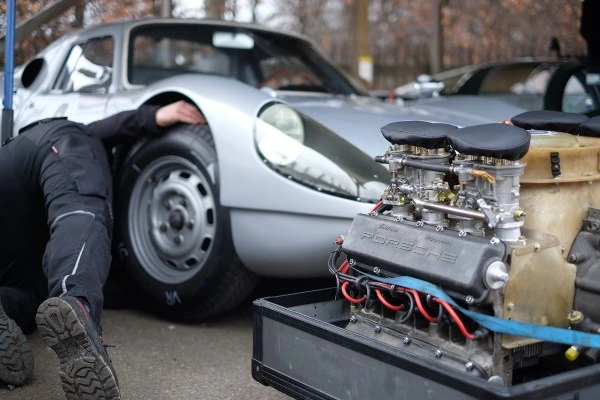The main difference between glow plugs and spark plugs is whether the vehicle has a petrol engine (spark ignition) or a diesel engine (compression ignition). Due to the peculiarities of each of them, different candles are used in both. For gasoline engines, spark plugs are used, while for diesel – incandescent. Uneven candle – proper selection of its specificity to the technology used in the car and paying attention to it during the inspection should be the basis for using the car.

Spark plugs in gasoline engines
In gasoline engines, the start-up of the unit begins only when an electric spark jumps between the electrodes of the candle – which is why they are also called spark-ignition engines. The easiest way to prevent potential damage is to control the spark plugs and replace them when you notice their wear.
Candles during operation are exposed to high pressure and high temperature in the combustion chamber – they are destroyed by typical operation, during which they must operate at high speeds with minimal load. After some time, the distance between the electrodes increases and it becomes more and more difficult to get a spark, and yet without it it is impossible to move. Therefore, if the voltage of 25,000 V does not cause a spark, it is worth looking under the hood and investing in a new component.
Even if the engine does not cause problems, it is worth taking a look at the candles from time to time and checking if they are not soiled with soot or oil – you may need to adjust the oil level or check the degree of wear of the piston rings. Preventively, it is also worth replacing them after driving 30,000 km – if they are standard candles. If you use better quality platinum or iridium candles, you can wait several dozen additional kilometers – from 80,000 to 120,000 km.
Glow plugs in diesel engines
In diesel engines, starting starts by heating it to the required temperature. Inside the power unit there is compressed air under high pressure – glow plugs heat it to initiate ignition at the moment when fuel enters the air. After a few seconds, glow plugs raise the temperature to up to several hundred degrees Celsius.
Glow plugs are certainly more difficult to replace – their delicate design requires a professional hand. However, as in the case of spark plugs, they wear out during operation – exposed to extremely high temperatures and pressures, they must be replaced so as not to lead to a much more powerful fault. The most important thing is to wait a few seconds before starting until the candle light goes out – this means that the desired temperature has been obtained and the engine is ready to go. Lighting it up while driving is an unequivocal tip to visit a mechanic.
A molten glow plug, like an ignition one, indicates an incorrect combustion process. Attention should be paid especially to white sediment, which indicates sulfurization of the fuel. Only the use of high-quality fuel guarantees a long service life of the entire vehicle. If it is poorly chosen or there is a lot of water in it, the easier it is to corrode the candles.
Oily candles can be evidence of a damaged injection pump. In turn, overheated candles usually indicate that the cooling of its socket is insufficient, or that the gasket under the head has burned out.
The question, however, is – how much to replace spark plugs? With typical vehicle operation, as long as you use dedicated candles, you may be tempted to do so after about 100,000 km. The more engine starts, the greater the load on the candles, so when driving around the city only for short distances, glow plugs can wear out much faster. When replacing, however, you need to remember that the candles are of the same type and replace the whole set at once – then they will have the same period of use.
How to increase the life of the engine and prevent its damage?
It is important to remember that candles work at high temperatures, which raises a lot of problems. For worn spark plugs – ignition or incandescent – nothing can be done but replace them. However, you can minimize the risk of damage by taking care of individual rubbing surfaces in the car – the ideal means for this will be engine oil additives. They ensure a longer service life of the vehicle thanks to the regeneration of rubbing surfaces with a ceramic layer, filling the cavities in the metal and restoring the nominal condition of the mechanism.
If you are wondering what additives for engine oil are the best, we definitely recommend checking out the offer that Ceramizer has prepared. Products of this brand increase the efficiency of each engine component, protecting it and delaying possible damage resulting from the typical operation of the vehicle.
